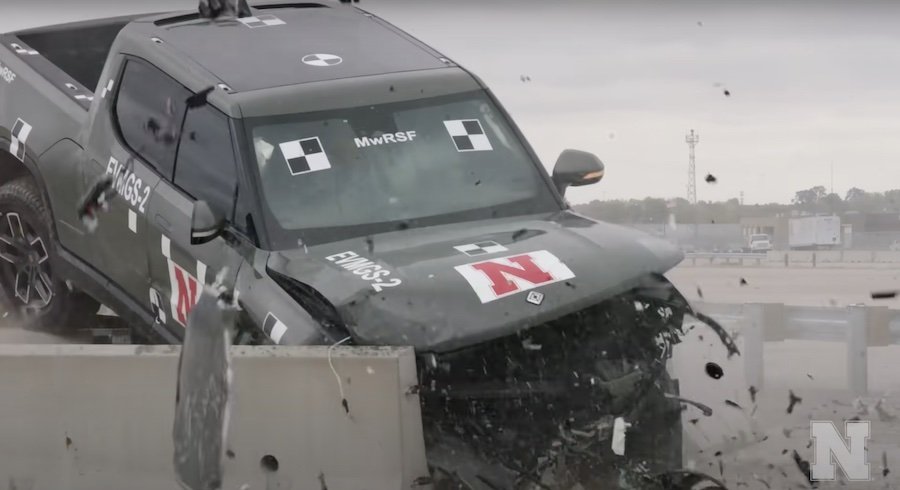Guardrails Are No Match For Heavy Electric Vehicles, Testing Shows

Electric vehicles are heavier than their combustion-powered counterparts. The massive battery packs these vehicles require are hefty pieces of equipment that sit in the floor and lower a vehicle’s center of gravity. This might improve handling, but it could present a challenge for the existing road safety infrastructure if recent tests are any indication.
The University of Nebraska-Lincoln recently catapulted a Rivian R1T electric pickup truck at a standard steel guardrail at 60 miles per hour to see how it’d hold up. It didn’t.
The frightening footage shows the hefty Rivian blasting through the steel guardrail as if it wasn’t even there, ripping it apart. The electric pickup still had enough momentum to then vault over a concrete barrier situated behind the guardrail.
The university also tested a Tesla Model 3, and the barrier also failed to stop the sedan. The Model 3 lifted the guardrail, passing below it. Additional crash tests are planned against the Midwest Guardrail System, which has been tested with vehicles that weigh up to 5,000 pounds, a weight rating many EVs exceed.
The Rivian R1T tips the scales at just over 7,000 lbs. The Ford F-150 Lightning, while lighter, weighs over 6,000 lbs. The Hummer EV is heavier at over 9,000 lbs, but even smaller EVs like the Mercedes-Benz EQE sedan break the 5,000-lbs mark.
The US Army Engineer Research and Development Center is sponsoring the research effort at the university. Not only is the testing being used to improve our road safety infrastructure, but the Army is also evaluating how best to protect military installations and other sensitive government sites from hostile actors who might use a hefty EV to bypass security measures.
More than 100,000 vehicles suffer from run-off crashes every year. With more EVs hitting the road, we’re bound to see issues rise with the safety infrastructure. These tests will help inform states about how best to protect lightweight gas-powered cars and heavy EVs at the same time.
Related News


